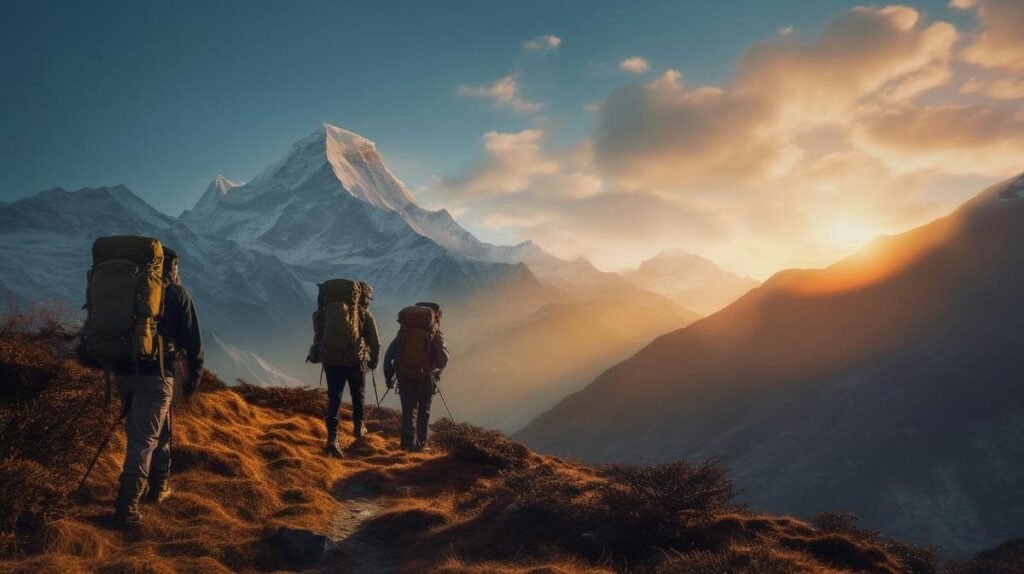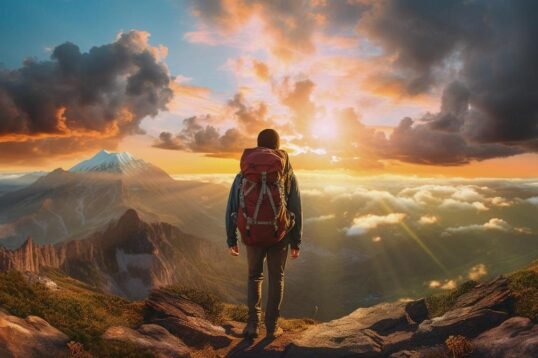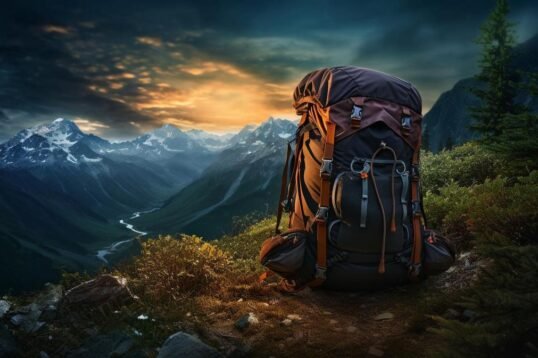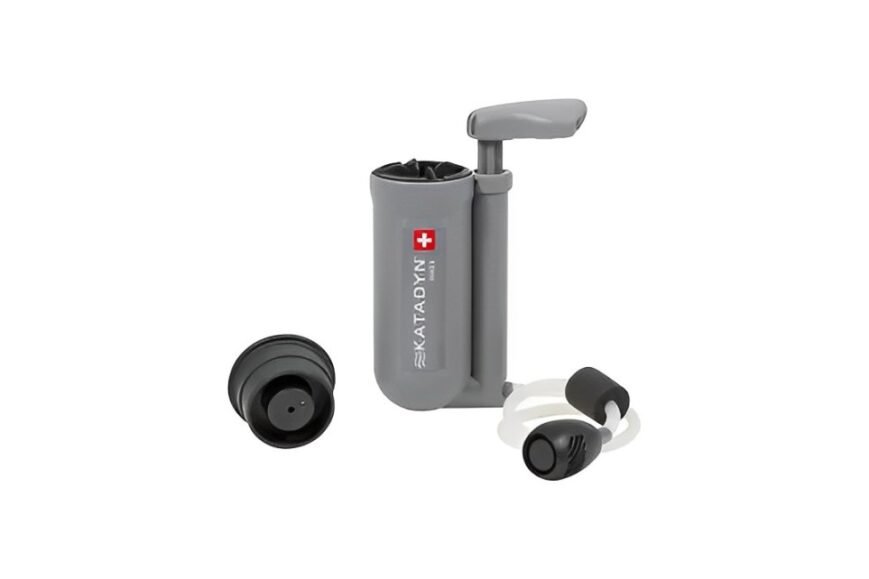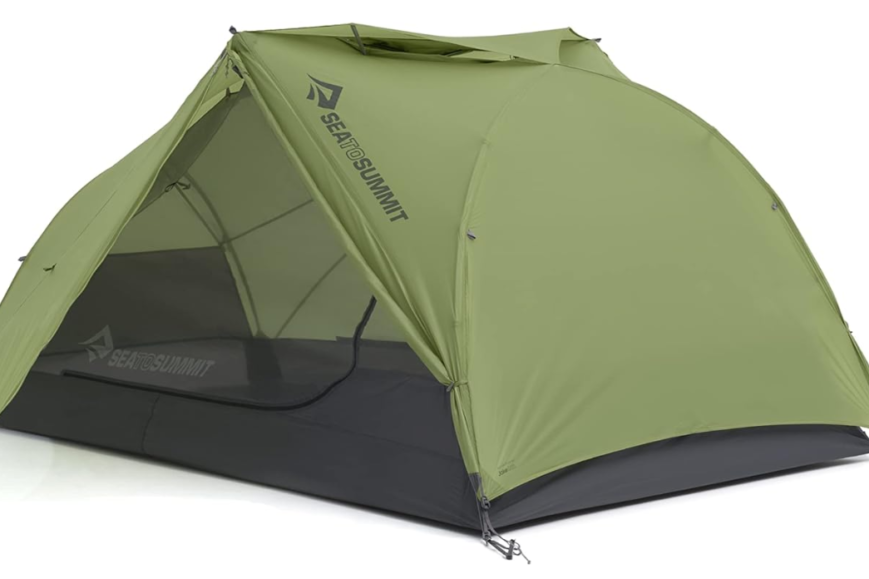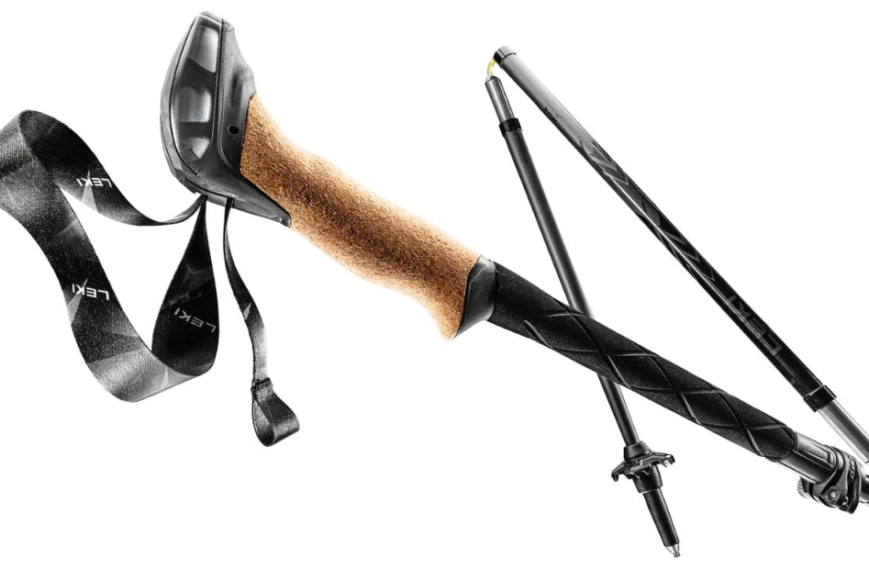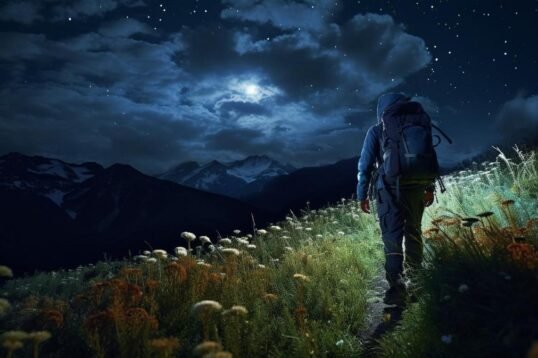- Always include a map, compass, water, food, and a first aid kit when trekking.
- Choose trekking footwear with good fit, support, and waterproof materials appropriate for the terrain and climate.
- Stay hydrated by planning for water sources; consider hydration packs and water treatment options.
- Use trekking poles for balance and support; select lightweight and adjustable ones.
- For food, pack high-energy, lightweight snacks like nuts and energy bars.
- Sleep comfortably by selecting the right sleeping bag for the temperature and a lightweight tent; consider a sleep pad for extra comfort.
- Beginners should focus on essentials and space-saving packing techniques; roll clothes and pack heavy items near your back.
- Ensure safety by carrying the 10 essentials for survival, informing someone of your route and expected return, and knowing how to use all your gear.
Heading into the wild, packed and ready, can make or break your trek. The right gear stands between a grand adventure and a tough ordeal. Our trek checklist covers all you must have – from the boots that will carry you over hills to the first aid kit for those just-in-case moments. Don’t start your journey without glancing over our essential tips for trekking gear, clothing, and survival tools. Lace-up, trekker – it’s time to prep right and step into the wild with confidence!
What Should I Absolutely Not Forget When Packing for a Trek?
What should I bring to trekking? Bring a detailed trekking gear list, hiking backpack necessities, trekking clothing essentials, a first aid kit, and outdoor navigation tools.
The Comprehensive Trekking Gear Checklist
Make a list of all you need. Include items for rest, cooking, and emergencies. Keep it light to make the hike easier.
Essentials for Your Hiking Backpack
Pack water, food, and a map or GPS. Do not forget a light, extra clothes, and a whistle.
Selecting Proper Trekking Clothing for Different Climates
For cold, wear layers. In heat, choose light, airy clothes. Keep rain gear close.
First Aid Kit Must-Haves for Trekkers
Bandages, antiseptic wipes, and tape are key. Add pain relief meds and bug spray too.
Vital Navigation Tools for Outdoor Enthusiasm
Use a map, compass, or GPS. Know how to use them before you leave.
How Do I Choose the Best Trekking Footwear?
“What is the most important thing in trekking?” The right trekking footwear. It can make your trip or break it. You need boots that fit well to stay safe and comfy on the trail.
- Key Features in Trekking Footwear for Optimal Comfort and Safety
Look for boots with ankle support. They should also have tough soles for rough ground. The right pair keeps your feet happy all day.
- Breaking in Your Boots to Avoid Blisters
New boots may hurt so, wear them before your trek. This helps stop blisters. Your feet will thank you later.
- Importance of Waterproof and Durable Materials
Always pick boots that can keep water out. You might cross rivers or get caught in the rain. Durable boots will last you many treks.
- Assessing Terrain and Climate: Selecting the Right Footwear
Think about where you’re going. Snow and rocks need different footwear. Select boots for the ground and weather of your route.
What Are My Options for Staying Hydrated on the Trail?
What should I prepare for trekking? Always start with water. Bring a water bottle or reservoir, and plan for water sources.
Essential Hydration Tips for Extended Treks
Drink water often while you walk. Aim for half a liter every hour. This helps you stay alert and strong. Dry air and high work can dry you out fast. Don’t just rely on thirst. That can trick you. Drink before you feel too thirsty.
Choosing the Right Hydration System for Your Adventure
Pick a hydration pack or bottle based on the trip. Long trips need bigger systems. Water bottles are easy to fill but can be bulky. Hydration bladders hold more and fit well in your pack. This keeps your hands free for balance or climbing.
Practical Advice for Maintaining Hydration on the Trail
Know where you can find water. Use a map to plan this. Sometimes, you might need a filter or purifier. Clear streams look safe but could have tiny germs. Filters clean this out, keeping you safe from stomach issues. Drink at every chance in hot weather, even if you don’t want to. And always check for leaks before you leave!
Which Trekking Poles Should I Use and Why?
What should I bring to trekking? You should bring trekking poles. They give you extra balance and support. Trekking poles can help you on uneven grounds and take the stress off your legs. They also aid in crossing streams and help with heavy loads.
The Benefits of Using Trekking Poles for Stability and Support
Trekking poles have big perks. They spread the load when you walk. This helps your knees, especially going downhill. They also make you stable on rough paths. With them, you can walk farther and feel less tired. Poles are a true friend for balance on your hikes.
Features to Look for in Lightweight Trekking Poles
When picking trekking poles, weight counts. Light poles are easy to carry and move with. Seek out poles that are sturdy but light. You don’t want them breaking on you. Also, check they have comfy grips and straps. Good poles fold up small so you can pack them away fast.
Must-have Gadget Features for Enhanced Trekking Experience
A great trek gadget can change the game. For trekking poles, look for ones that adjust in height. This is key for different trails and slopes. Baskets stop them from sinking into soft ground. Go for ones that snap tight and won’t slip. Bonus points if they have a built-in camera mount!
Remember, not all poles suit everyone. It’s about finding the right fit for your trek needs. But with smart choices, trekking poles can turn a good hike into a great adventure.
How Do I Select and Pack My Trekking Food Supplies?
What should I prepare for trekking? First, make a plan for your trekking food supplies. Choose foods that give you lots of power. They should not weigh much. Pick snacks that are easy to eat while you walk.
Key Considerations for Packing Trekking Food Supplies
Think about your trip’s length. Look at how tough it will be. Longer trips mean you need more food. You must pack enough to keep your strength up. But don’t make your pack too heavy. It’s a balance.
Energy Snacks that Pack a Punch for Long Treks
Bring energy snacks for hikers. They can be nuts, bars, or dried fruit. These are easy to carry and eat. They help when you get tired. They give quick power to keep you going.
Electrolyte Replenishment for Sustained Energy
You lose water and salts when you hike. Replenishing electrolytes while hiking is key. Drink sports drinks or water with added salts. This will help keep your body strong.
High-energy Foods Ideal for Outdoor Adventures
Choose high-energy foods for hiking. Go for whole grains, nuts, and seeds. Peanut butter is great too. These foods last long in your body. So you have energy for a longer time. Plus, they taste good too!
Remember this when you pack your food. It can make your trek better. It keeps you full of energy and ready to explore.
What Sleeping Equipment is Essential for a Comfortable Trek?
What should I bring to trekking for a good night’s sleep? A fitting sleeping bag and a sturdy tent. Let me help you pack the right gear so you sleep tight and wake up ready for more adventure.
Choosing the Right Sleeping Bag for Different Temperature Zones
Pick a sleeping bag for the weather you will face. Cold mountains or humid forests, the choice matters. Labels show the right bag for each temperature. Get one that suits the lowest temps you expect.
Important Features of a Hiking Tent for Weather Protection
A good hiking tent will shield you from rain and wind. Look for waterproof materials and strong poles. Your tent should be easy to set up and pack down. It should also be light to carry on your trip.
Comfort Enhancements for Your Trek Sleeping Equipment
For extra comfort, bring a sleep pad or an air mattress. Your back will thank you after a long day of hiking. Also, consider a pillow, or stuff your clothes into a pillowcase. Comfort on the trail leads to better rest and more energy for your trek.
What Should Beginners Know About Packing for a Trek?
Trekking essentials for beginners include a map, compass, water, food, and a first aid kit. These items ensure that you can navigate, stay hydrated, energized, and handle minor injuries.
When packing for a multi-day trek, think minimal but essential. Each item must earn its space in your backpack. A good beginners guide to trekking will stress the importance of a map and compass. Even if you plan to use a GPS device or smartphone, these traditional navigation tools don’t rely on batteries or signal, and they are crucial for staying on track.
Next is water—always carry enough to last you between refill points and consider a water treatment method or tool like a portable filter.
For food, choose high-energy, lightweight options. Think nuts, seeds, and energy bars. They’ll save space and give you the fuel you need.
Include a basic first aid kit for trekking. It should have bandages, antiseptic wipes, blister treatment, and any personal medications.
Remember to throw in a headlamp or flashlight with extra batteries for when the sun dips below the horizon.
Your clothing should be layered to handle changing weather. Pack an extra set in case you get wet, and always pack a hat and gloves.
Lastly, learn some trekking packing hacks to save space. Roll your clothes. Use sandwich bags to keep things dry. And pack heavier items close to your back for balance.
With these essentials, you’re set for an exhilarating journey through nature, ensuring comfort, safety, and the joy of discovery. Happy trails!
How Can I Ensure Personal Safety While Trekking?
What are the 10 essentials for survival?
The 10 essentials for survival are:
- Map
- Compass
- Sunglasses and sunscreen
- Extra clothing
- Headlamp or flashlight
- First-aid supplies
- Firestarter
- Matches
- Knife
- Extra food and water
These items help you stay safe and find your way in the wild.
What should I prepare for trekking?
Prepare by packing personal safety gear, knowing the trail, and telling someone your plan.
- Checklist of Personal Safety Items for Outdoor Adventures
When I hit the trails, my safety gear is a must. Always bring a map and compass. They guide you when phones and GPS may fail. Tote extra water and food for energy. Pack a flashlight and fire starter so you can see and keep warm if you get stuck outside at night. Wrap up extra clothes to stay dry and warm. Toss in a first-aid kit for cuts or scrapes. Strap on a whistle to call for help if you get lost.
- Solo Trekking: Tips and Precautions for Ensuring Safety
Planning to trek by yourself? It’s key to take extra care. Tell a friend where you’re going and when you’ll be back. This way, someone knows to look for you if you’re late. Learn some basic first aid to patch yourself up in a pinch. Practice with your gear at home first. This way, you won’t be fuming with a weird tent or stove when it’s getting dark.
- Packing a Survival Kit: Essentials for the Unexpected
I never start a hike without my survival kit. It’s a small bag with big lifesavers like a whistle, a water purifier, and a warm blanket. You might think you won’t need it, but if you do, you’ll be thanking your past self for being so smart. Remember, it’s not just about having the gear; knowing how to use it is what really counts.
With these tips, you can focus on the stunning views and the peace of nature, with the peace of mind that comes from being well-prepared. It’s all about enjoying your trek without any nasty surprises.
Conclusion
In this post, we covered the must-haves for trekking, from the right gear to hydration tips. Good boots, a first aid kit, and trekking poles are key. Remember, always pack smart for safety and comfort. Keep learning and stay ready for your next outdoor adventure!
![]()

